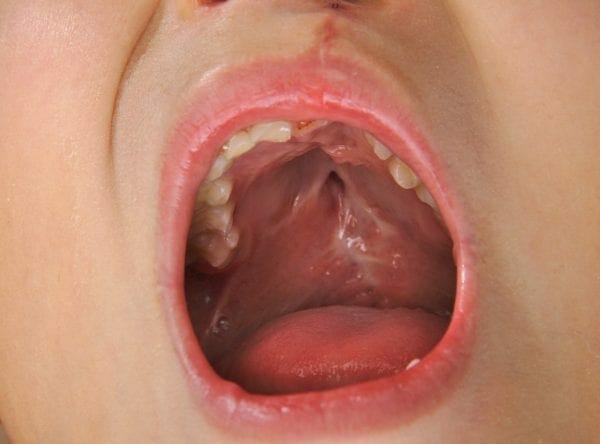Orthodontist Treatments and Correction
Some of the most common orthodontic problems that require orthodontic intervention are crowded teeth, impacted teeth, and poor oral habits. Luckily for residents of Temecula and Lake Elsinore, Dr. Redford and Dr. Burke are available to correct these problems using their years of orthodontic training and experience for patients.
Causes and Reasons to Fix Crowded Teeth
Crowding occurs when there isn’t enough space for teeth to fit in the mouth. If left untreated, the problem gets worse with age. Over time, teeth move in front of or behind each other—causing alignment issues. For this reason, overcrowding should be treated as early as possible.
Teeth crowding is quite common in both adults and children. Causes can be genetic or environmental, which can include:
- small jaw size
- large tooth size
- extra teeth
- cleft lip or palate
- habits such as thumb sucking or tongue thrusting.

Besides preventing a smile from looking its best, overcrowding can result in serious problems. By addressing these common orthodontic problems early on, patients will experience fewer problems down the road. Here’s why patients should fix crowded teeth as soon as possible.
- Properly spaced teeth are easier to clean, which improves their strength and long-term health. This means fewer cavities, fillings and a reduced chance of gum disease.
- Addressing teeth crowding often helps correct malocclusions (bad bites) by aligning the jaw.
- Crowding can cause teeth to rub together, which leads to premature wear and possible tooth loss.
- Teeth that are correctly aligned result in more attractive smiles, which boosts self-esteem and confidence.
Treatment Options for Overcrowding
Treatment options are varied and depend on the severity of the crowding when treatment begins, in addition to how well patients work with the orthodontist. After a clinical examination, the doctors will recommend a course of treatment suited for a patient’s unique situation. Treatment length for the following most common orthodontic problems can range from a few months to a few years.
Crowded teeth can be corrected by using one or more of the options below.
- Braces are the most common treatment option and may be combined with the removal of one or more teeth.
- Invisalign can fix minor to moderate overcrowding issues and is an excellent choice for patients who want an alternative to braces. The removal of one or more teeth may be required in some cases.
- Retainers hold teeth in place after other orthodontic treatment (such as braces or Invisalign). There are special retainer types that can sometimes make small improvements in alignment.
- Space maintainers are used if a baby tooth falls out prematurely. The appliance stops teeth from moving into the empty space, which might lead to overcrowding once permanent teeth begin to erupt.
- Palatal expanders are orthodontic appliances that increase the width of the upper jaw, making space for teeth. Expanders are most effective with children aged 7-12. There are even special expanders that can both widen the upper jaw and move molars backward in the mouth to recreate lost space (Ie. if a baby tooth was lost or removed prematurely).
- Habit appliances help stop chronic thumb and finger sucking by interrupting the habit routine. They are successful most of the time.
- Tooth-size reduction is used for teeth that are too big or when each tooth’s size is inconsistent. This is a tool that we use with braces, aligners, or retainers.
- Tooth removal (extractions) are always a last resort. However, one or more teeth might need to be removed to create the appropriate amount of space in the mouth, or to prevent teeth from finishing excessively tipped forwards (Ie. “buck teeth”).
Orthodontic Treatment for Impacted Teeth
Impaction happens when a tooth doesn’t erupt through the gums when expected or is not in the proper position. This can happen for a variety of reasons, including:
- genetic predisposition to impactions (Ie. relative also had an impacted tooth)
- improperly oriented in the gums
- lack of space caused by overcrowding or crooked teeth
- an extra tooth or physical barrier is blocking its eruption
- tooth did not develop quickly enough
- shape of the tooth
Impacted Teeth
Impacted teeth often occur when children are in the process transitioning from baby teeth to adult teeth. A tooth might become trapped in the gums if a baby tooth doesn’t fall out on time or something blocks the tooth’s path. The tooth might also appear in the wrong place.
Because they aren’t easily visible, it can be hard to tell if an impacted tooth is present without dental x-rays. Also, impacted teeth may be completely asymptomatic. Therefore, it is important for children to be seen by the age of 7 and then monitored closely as they transition from baby teeth to adult teeth.
When teeth (especially canine teeth) become impacted, they can threaten and harm the roots of the adjacent front permanent tooth roots. In the extreme case, front teeth can be lost if impacted canines are not orthodontically repositioned in an appropriate and timely manner.
Wisdom Teeth
Aside from wisdom teeth, the most commonly impacted teeth are canines (“eye” or “fang” teeth), but any tooth can be impacted. Although most impacted wisdom teeth are removed via surgery, this is not always the best option for teeth located in the front of the mouth.

Fortunately, an orthodontist (working closely with an oral surgeon) can help move an impacted tooth to its proper location. Sometimes, this simply means making room for the tooth to erupt naturally—often as simple as extracting a baby tooth. However, additional intervention may be required in more severe impaction cases or if the impacted tooth is threatening the health of an adjacent permanent tooth root. One such additional intervention is the chain and bracket procedure.
Chain and Bracket Procedure. To make space for an impacted tooth to erupt, other teeth may need to be moved out of the way. In order to do this, an orthodontist uses braces or an appliance (such as a Pendulum appliance) on surrounding teeth. Once enough space is available, an oral surgeon performs surgery to remove anything covering the tooth. A chain is then attached to the tooth and connected to the braces or appliance. Once a patient heals from surgery, the orthodontist helps the tooth erupt in the proper place by periodically adjusting the chain connected to the braces. The entire procedure may take several months.
Orthodontic Fixes for Oral Habits
Everyone knows that not brushing and flossing correctly can lead to tooth decay. However, other oral habits can also result in problems that might require an orthodontic fix. Below are some problematic habits and how orthodontists can help.
- Teeth clenching or grinding (also known as bruxism) usually happens at night and can seriously damage teeth. Although people with this condition don’t always know they are doing it, waking up with jaw muscle soreness or headaches is an indicator that bruxism might be a problem.Solution: Get a custom dental guard created by your orthodontist.
- Finger/thumb sucking or tongue thrusting is common among babies and young children. However, if the habit continues too long, teeth can be pushed out of alignment and alter the jaw structure.Solution:A Habit appliance interrupts the habit. These appliances are successful most of the time.
The following habits don’t necessarily require orthodontic fixes, but they cause problems with orthodontic appliances such as braces.
- Chewing on a pencil or pen cap is an oral habit that can wreak havoc with braces by breaking brackets or pushing wires out of place.Solution: Stop the habit or us silicone “chewlery” that is specially made to be chewed on to replace the habit.
- Biting or chewing ice cubes can easily crack teeth and break brackets or wires.Solution: Substitute hard ice cubes used in cold drinks or popsicles with “slushy” ice.
To learn more how the doctors at Burke & Redford Orthodontists can help you or your family with the orthodontic issues, call our office at (951) 699-8011 to schedule a free consultation with Dr. Redford or Dr. Burke to discuss your most common orthodontic problems. You can also fill out the form on our website, and our staff will contact you during business hours.